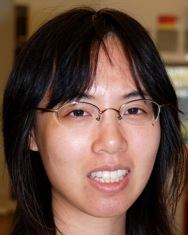 |
||||||
| School of Medicine • University of Washington • Box 357735 • 1705 NE Pacific St • Seattle WA 98195 | ||||||
| About Varisa Huangyutitham |
Email: Phone: Location: Mailing Address: Shipping Address: |
Research | ||||
|
The intracellular secondary messenger cyclic-di-GMP regulates the switch between the biofilm lifestyle and the planktonic lifestyle in bacteria. One way to regulate c-di-GMP is through subcellular localization of diguanylate cyclases, which catalyze the formation of c-di-GMP. The diguanylate cyclase WspR in Pseudomonas aeruginosa has interesting localization properties, which can be visualized by fusing WspR to a yellow fluorescent protein (YFP). In planktonic, broth-grown P. aeruginosa cells, WspR-YFP is diffuse throughout the cytoplasm. However, WspR-YFP localizes into subcellular clusters at the peripheries of the cell when the bacteria are grown on an agar surface. WspR cluster formation is linked to exopolysaccharide (EPS) synthesis as mutants with constitutive WspR clustering overproduce EPS, whereas mutants in which WspR will not cluster are deficient in EPS production. I am interested in how the structure of WspR contributes to its localization properties and cyclase activity. My goal is to further untangle the relationships between cluster formation, WspR activation, and c-di-GMP production. Some questions I’m considering are: What causes WspR to cluster in response to surface growth? Is WspR delivering c-di-GMP to specific proteins and if so, what are they?
|
|||||
 Varisa Huangyutitham
Varisa Huangyutitham